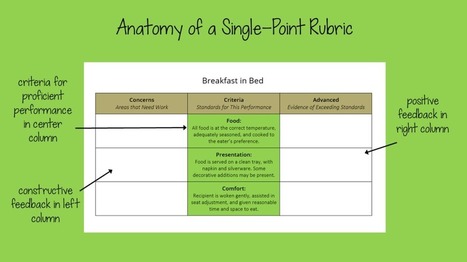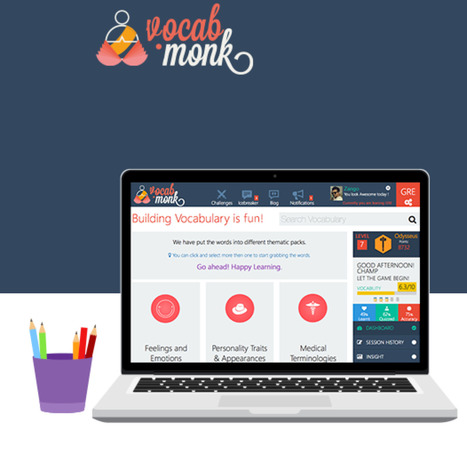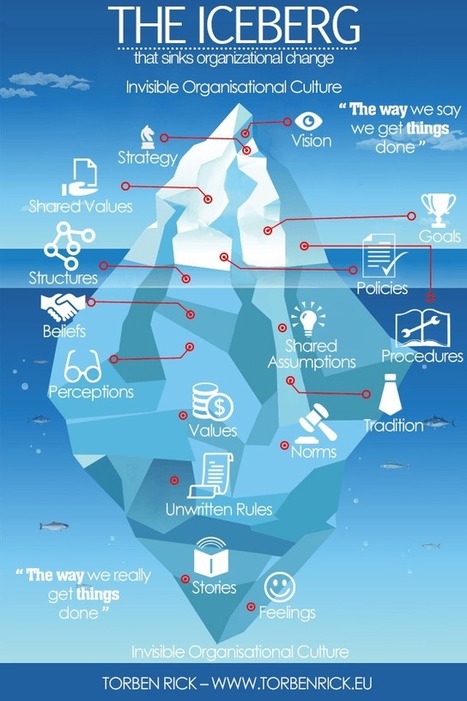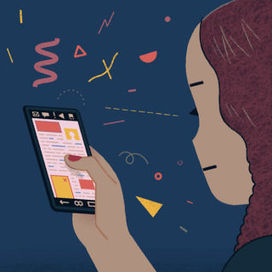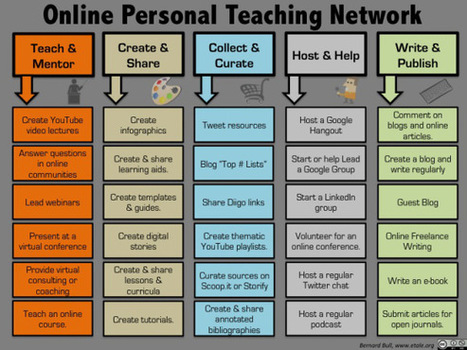Barbie has a dream house, and it seems only fair that book nerds should have one too. Here's a collection of houses that showcase their owners' love of literature.
Get Started for FREE
Sign up with Facebook Sign up with X
I don't have a Facebook or a X account

 Your new post is loading... Your new post is loading...
 Your new post is loading... Your new post is loading...
A run of poor sleep can have a dramatic effect on the internal workings of the human body, say UK researchers. Via Greg Downey 
Greg Downey's curator insight,
February 27, 2013 8:08 PM
Apparently the effects are really most pronounced on inflamatory responses and the immune system. They're using the results, according to the article, to work on ways to 'do away with sleep.'
So researchers at the University of Surrey analysed the blood of 26 people after they had had plenty of sleep, up to 10 hours each night for a week, and compared the results with samples after a week of fewer than six hours a night.
More than 700 genes were altered by the shift. Each contains the instructions for building a protein, so those that became more active produced more proteins - changing the chemistry of the body.
EasyBib Tools is definitely a must have app for college and research students. With one click you can generate citations for websites and create bibliographies. It is a time saving tool for sure but I would not trust it one hundred per cent, always go through the citations and make sure they are properly formatted. Via John Evans
Most of us turn to the internet when we are looking for resources to use for a presentation, report or article. The internet holds the key to so many robust resources. 
Suzanne's curator insight,
February 17, 2015 5:02 AM
Every language teacher and student should contribute to make this a powerful resource concept. Language is an instrument; use it, take care of it, share it. 
Dean Mantz's curator insight,
February 18, 2015 11:15 AM
Thanks to @Dennis T OConnor for sharing this infographic on finding and identifying open source education resources. 
Iolanda Bueno de Camargo Cortelazzo's curator insight,
February 19, 2015 12:00 PM
Bastante úteis estas informações para professores e gestores educacionais.
"The practice of using single point rubrics is slowly but surely catching on. The simplicity of these rubrics — with just a single column of criteria, rather than a full menu of performance levels — offers a whole host of benefits:
-Students find them easier to read when preparing an assignment. With only the target expectations to focus on, they are more likely to read those expectations.
Via Jim Lerman
As I reviewed all the photos, conference records, and feedback I’ve received over the years, one thing really struck me: Our writing looks more like making, and the tools we use influence this greatly. Via John Evans
In a perfect world students would understand that education is for their benefit and put their all into every assignment. Unfortunately, every educator working today knows how far off the reality is from that ideal. Via John Evans
A growing directory of tools for verifying, fact checking and assessing the validity of social media. Via Nik Peachey 
Nik Peachey's curator insight,
January 20, 2015 8:47 AM
This is a really useful resource for research students and anyone interested in journalism. 
Fiona Harvey's curator insight,
January 20, 2015 9:35 AM
Information literacy. Resources on checking sources of information on the web. Great collection includes relevant Ted Talks and tools.
Lindsay Sprague's curator insight,
January 29, 2015 4:12 PM
"A directory of tools for verifying, fact checking and assessing the validity of social media and user generated content." As students become more and more dependent on the internet to provide them resources for learning, this could be a great tool to help them recognize what's legitimate.
5th Annual International Conference on Qualitative and Quantitative Economics Research (QQE 2015), Singapore, Singapore, In the past, economics is primarily focused on numbers and statistics.
"In this article, we will examine seven common flaws in the construction of multiple-choice questions that students can exploit to help them select the correct answer based on their testwiseness rather than content knowledge. By recognizing these common flaws, you can learn to write better questions for your tests and quizzes." Via EDTECH@UTRGV
VocabMonk is a virtual guide to improve your vocabulary skills. Test your vocabulary today and gain the extra edge required to crack exams like GRE, GMAT, SAT and CAT for free. Via Nik Peachey 
Daniel Compton's curator insight,
July 7, 2014 10:25 AM
Another vocabulary builder- the standardized test features are a plus. 
Ricard Garcia's curator insight,
August 5, 2014 2:51 AM
Time for drills.... always useful!! Worth a look
Those are the four main styles used when writing professionally or academically. Students will need to use one of these standard styles, so it?s important |
Welcome to Field Notes. Field Notes is a new section launching as part of the Fieldsights section of the new SCA website which will be organized by Grant Otsuki and Ali Kenner. We see it as an experiment in engaging the SCA community in a discussion on the themes and issues that occupy us as we try to make sense of what we see, hear, and experience as ethnographers, teachers, and public scholars. Via Greg Downey 
Greg Downey's curator insight,
January 7, 2013 6:46 PM
The journal Cultural Anthropology has been one of the most innovative in creating open, online resources for our field. This new initiative is an attempt to spark conversation with short, thematic posts in conversation. I'll be watching....
Some aspects of organizational culture are visible on the surface, like the tip of an iceberg, while others are implicit and submerged within the organization. Because these ingrained assumptions are tacit and below the surface, they are not easy to see or deal with, although they affect everything the organization does.
Learn more:
- http://www.scoop.it/t/21st-century-learning-and-teaching/?tag=Organization+Learning
Via The Learning Factor, Gust MEES 
Gudrun Hoehne's curator insight,
May 20, 2015 4:49 AM
In global companies sometime the organizational cultures differ according to the subsidiaries. This is also of importance for virtual tems who work acroos different subsidiaries and countries. 
Javier Antonio Bellina's curator insight,
June 8, 2015 11:07 AM
Lo que hay bajo el Currículum: El Currículum Oculto
Most amazing of all, Google made this tool available for free. This despite an educational -- and, let's be honest, entertainment -- value that's virtually impossible to measure.
I just came across this timely poster shared on a Google Plus post by Mickey McFetridge. This visual, titled Qualitative Formative Assessment Toolkit, features four practical ways to document learning using mobile technology. Two days ago I shared here a list of some of the best iPad apps to help students document and show their learning and this poster clicks in perfectly with that post. Via Jim Lerman
Trying to get all of your students to the same set of websites at the same time can be a frustrating experiences. Just a couple of mistyped characters can create a frustrating experience for everyone. One way to avoid this situation is to post all of your links on one course webpage or in a blog post. Another solution is to use a link bundling service that will group all of your links together into one package. Then instead of sending out a bunch of individual links you can just send one link that will open all of the bundled links for your students. Here are two services that you can use for just that purpose. Via John Evans
If you’re look for a way to support your students as writers or simply would like an extra tool to check your own work, you’ll want to check out Grammarly. It is an automated grammar checker web application that is already used by over four million people around the world. Grammarly helps users detect grammar errors in their writing, detect plagiarism, and use better vocabulary words. Via John Evans
Certainly, as we turn to online reading, the physiology of the reading process itself shifts; we don’t read the same way online as we do on paper. Anne Mangen, a professor at the National Centre for Reading Education and Research at the University of Stavanger, in Norway, points out that reading is always an interaction between a person and a technology, be it a computer or an e-reader or even a bound book. Via Nik Peachey, Jim Lerman 
Erica Bilder's curator insight,
February 6, 2015 4:05 AM
How the medium matters in deep digital reading and how we can improve on it.
Recently, I wrote an article about how to build an online personal teaching network, re-imagining opportunities to teach in the digital world and thinking about the role of teacher as independent c... Via Dr. Susan Bainbridge, Mark E. Deschaine, PhD, Dean J. Fusto, Jim Lerman
"Being a student right now is difficult. There’s that nagging feeling that you could always ‘just Google it’ and know the answer to something. It’s an urge many students must fight on a day-to-day basis if they want to actually get some reliable answers. Sure, you could punch in a simple question or keyword and get millions of results.
But what happens when you need to do a ‘Google A Day’ style level of research? An instance where you need to dive into dozens of actual books or figure out how to sort the good resources from the less-than-reliable sources?
That’s where figuring out some of the best Google tips comes in handy." Via John Evans
Having the original versus curated content debate? Here's research to help you. Advantages and disadvantages of original vs curated content are presented. 
Patricia Haddock's curator insight,
October 4, 2014 4:51 PM
It's easier to curate content than create original content; however, original content is important since it drives your brand messaging. I recommend a mix of both.
"In 2001, two high school seniors in Chicago built a website that made its way into every writing class in the USA. Thanks to those two students we now have Easybib.com. Little did those two innovative students know that their efforts would put Easybib in front of 40 million students each year and inspire myself and my best friend to create a website of our own before heading off for college (more about that below)." Via EDTECH@UTRGV

becool's curator insight,
August 21, 2014 7:49 AM
Mooi concept, zou testen indien er een NL ondersteuning is. Wie kan zo'n app maken voor de Nederlandstalige markt? |






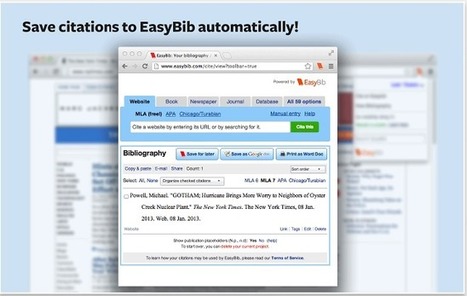
![How To Find Openly Licensed Educational Resources You Can Use [Infographic] | ED 262 Research, Reference & Resource Skills | Scoop.it](https://img.scoop.it/UEhtZjmMpwB5jMfdGK4baTl72eJkfbmt4t8yenImKBVvK0kTmF0xjctABnaLJIm9)
